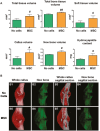Cell-based therapy in the treatment of musculoskeletal diseases
- PMID: 39226104
- PMCID: PMC11465182
- DOI: 10.1093/stcltm/szae049
Cell-based therapy in the treatment of musculoskeletal diseases
Abstract
A limited number of tissues can spontaneously regenerate following injury, and even fewer can regenerate to a state comparable to mature, healthy adult tissue. Mesenchymal stem cells (MSCs) were first described in the 1960s-1970s by Friedenstein et al as a small population of bone marrow cells with osteogenic potential and abilities to differentiate into chondrocytes. In 1991, Arnold Caplan coined the term "mesenchymal cells" after identifying these cells as a theoretical precursor to bone, cartilage, tendon, ligament, marrow stroma, adipocyte, dermis, muscle, and connective tissues. MSCs are derived from periosteum, fat, and muscle. Another attractive property of MSCs is their immunoregulatory and regenerative properties, which result from crosstalk with their microenvironment and components of the innate immune system. Collectively, these properties make MSCs potentially attractive for various therapeutic purposes. MSCs offer potential in sports medicine, aiding in muscle recovery, meniscal tears, and tendon and ligament injuries. In joint disease, MSCs have the potential for chondrogenesis and reversing the effects of osteoarthritis. MSCs have also demonstrated potential application to the treatment of degenerative disc disease of the cervical, thoracic, and lumbar spine.
Keywords: immunomodulation; mesenchymal stem cells; musculoskeletal diseases; orthopedic surgery; regenerative medicine; tissue engineering.
© The Author(s) 2024. Published by Oxford University Press.
Conflict of interest statement
J.M.H. reports having a patent for cardiac cell-based therapy and holds equity in Vestion Inc. and maintains a professional relationship with Vestion Inc. as a consultant and member of the Board of Directors and Scientific Advisory Board. Vestion Inc. did not play a role in the design, conduct, or funding of the study. J.M.H. is the Chief Scientific Officer, a compensated consultant and board member for Longeveron Inc. and holds equity in Longeveron. J.M.H. is also the co-inventor of intellectual property licensed to Longeveron. Longeveron did not play a role in the design, conduct, or funding of the study. The University of Miami is an equity owner in Longeveron Inc., which has licensed intellectual property from the University of Miami.
Figures





References
-
- Balkan W, Banerjee M, Trapana J, Hare JM.. Marrow-Derived Stroma Cells for Cardiac Regeneration. Vol 1. Emerging Technologies for Heart Diseases. Elsevier; 2020.
-
- Fridenshteĭn A, Piatetskiĭ S II, Petrakova KV.. Kosteobrazovanie v transplantatakh kostnomozgovykh kletok. [Osteogenesis in transplants of bone marrow cells]. Arkh Anat Gistol Embriol. 1969;56(3):3-11. - PubMed
Publication types
MeSH terms
LinkOut - more resources
Full Text Sources

